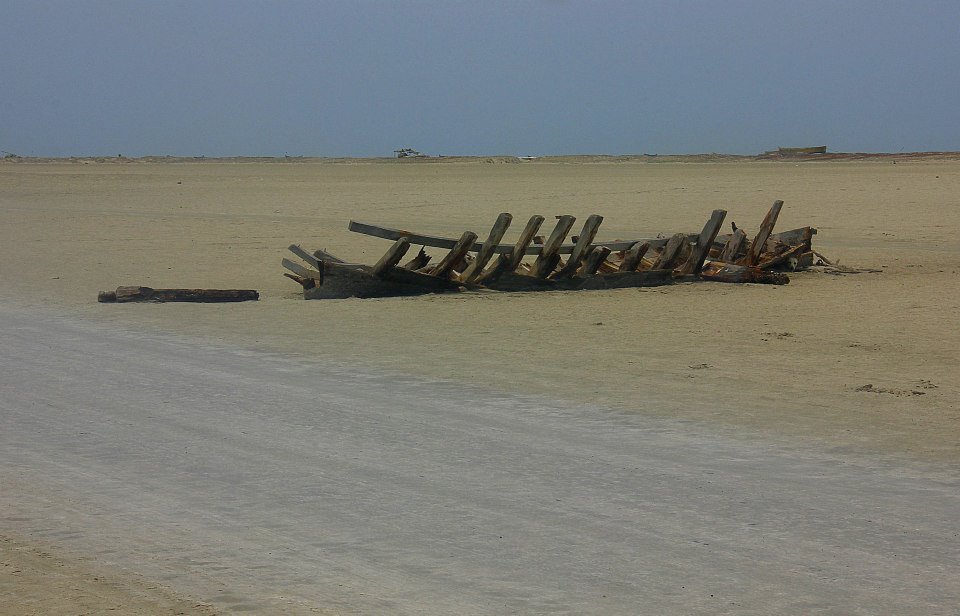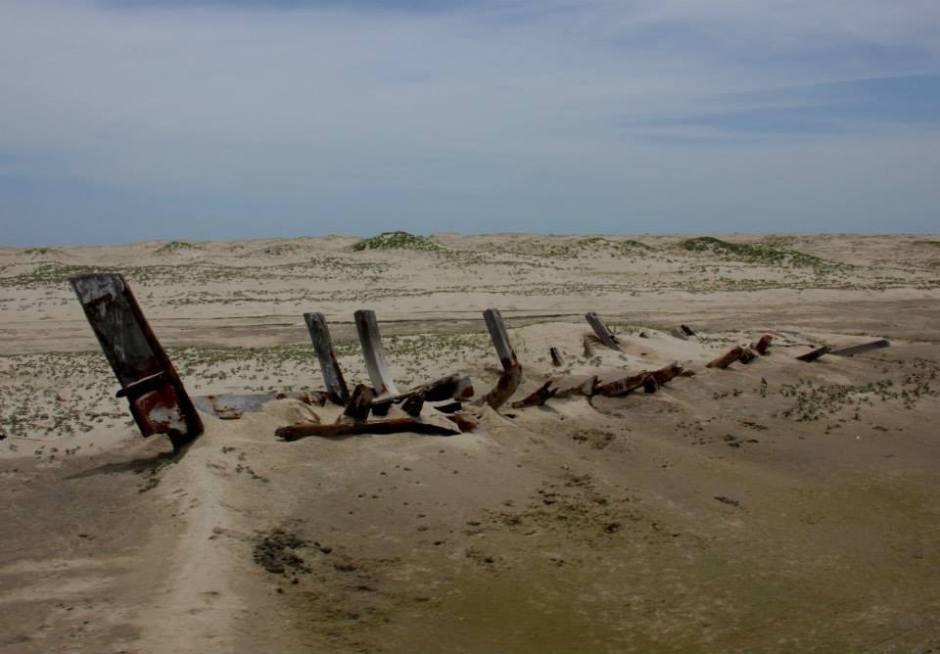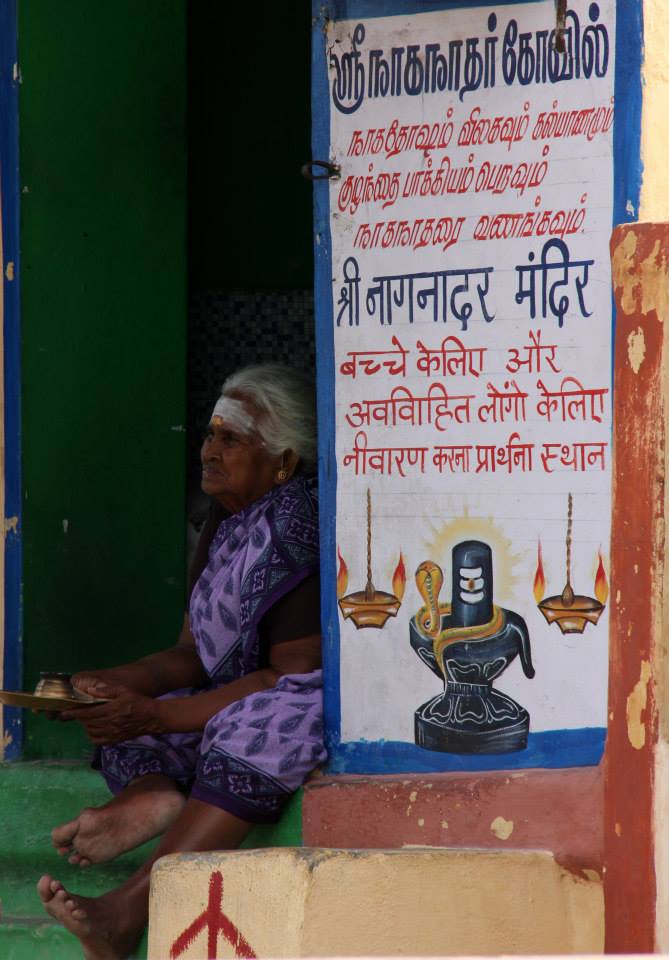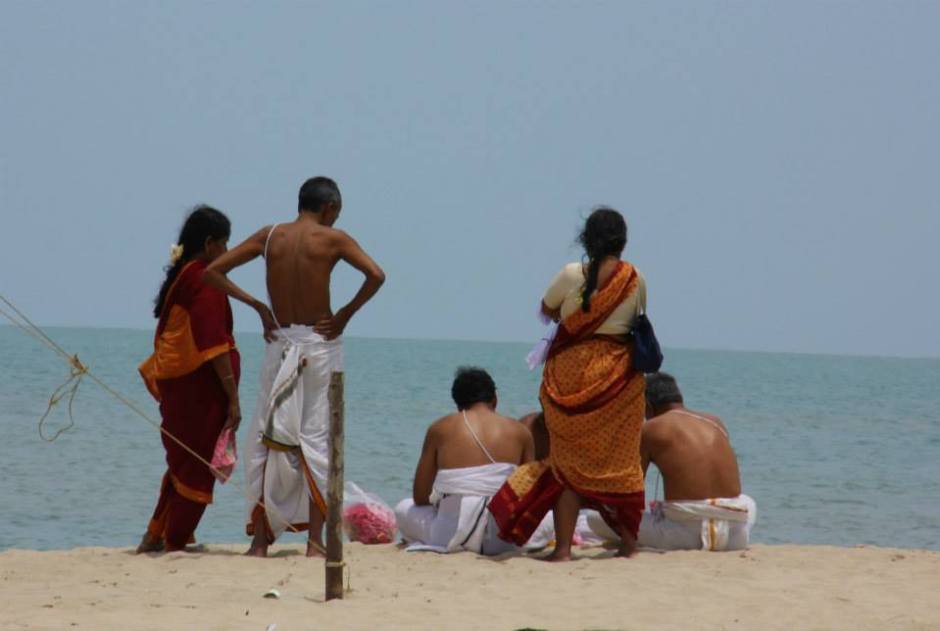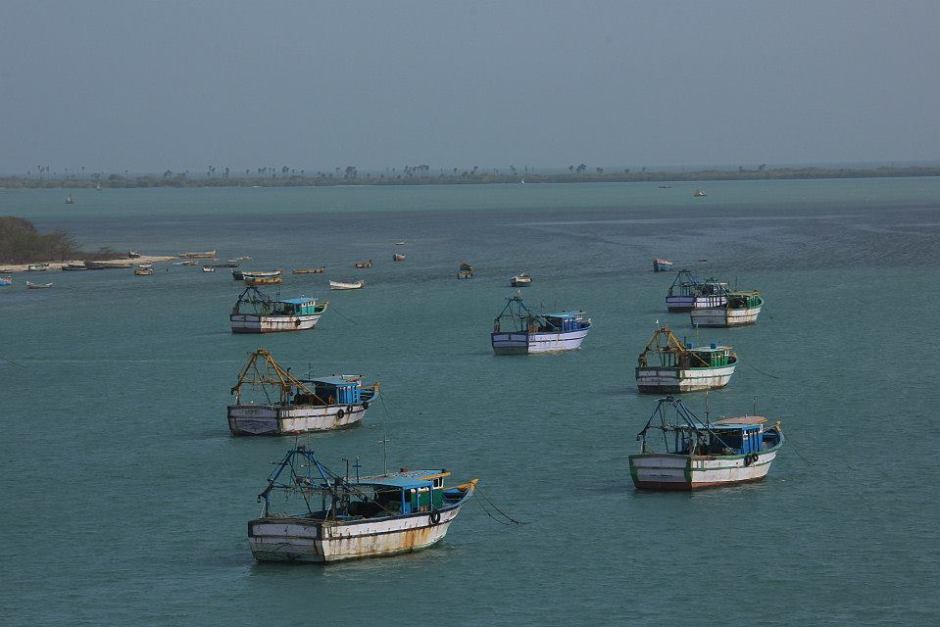Dhanushkodi literally means “the end of bow” and it is indeed the most tapering point of India. Sri Lanka lies only 31 kilometers away and both the neighbours are separated by the narrow Palk Strait. A thin shallow strip of water, Palk Strait is a confluence of several water bodies and many important South Indian rivers like Vaigai flow into it. Gulf of Mannar joins it from the south west, Bay of Bengal surges in from north east and the mythical Adam’s Bridge connects Dhanushkodi with Sri Lanka’s Talaimannar in Mannar Island. .
Although, the southernmost end of India, technically speaking Dhanushkodi lies on one side of the Pamban Island, in Tamil Nadu, which also houses the mega important Hindu temple called Rameshwaram. Pamban had been the playground of Indian mythological giants of the grand epic Ramayana and is of massive religious importance to the Hindus. When Sri Lanka’s (Lanka as mentioned in the epic, Ramayana) demon king Ravana, had decided to kidnap Sita, the princess wife of the Hindu hero Lord Rama, he had no idea, that his act would lead to centuries of religious belief, political rifts and scientific confusion. Being enamoured by Sita’s beauty, he had smuggled her away to his island nation on a flying chariot and had hidden her among the flowering gardens there. While it is (partially) understandable (and forgivable) to be captivated by someone else’s pretty wife, but kidnapping her and holding her hostage, against her will, till she relents, is a big No No.
Going by the fact that most of world’s epic battles, have been fought because of beautiful women, Ravana’s mischief too had guaranteed conflict. Thus, after searching for her far and wide, when the monkey god Hanumana had finally managed to discover Sita’s whereabouts, it had been no wonder that, an infuriated Lord Rama had decided to wage war against Lanka’s king. He had taken his ragtag assorted army all the way to Pamban Island and with Hanuman, his right hand man’s help, had started building a causeway to Sri Lanka. Rama, who had been much popular because of his kindness, had got help from all his friends and monkeys, birds, bears and even squirrels had pitched in to construct the bridge, which is also known as Rama Setu. Rama and his friends had used rows of floating boulders for his army to step on and he had thanked them all from the bottom of his heart.
Legends say that the bushy tailed Indian squirrels had gotten their prominent striped markings from Rama’s loving strokes and it is just another cute tale to a scintillating collection of myths, called Ramayana. Anyway, a fierce battle had ensued in Lanka and as predicted, good had presided over evil. Ravana had perished in the battle, leaving his brother Vibhishana as the new King and the reunited Rama-Sita (with the entire entourage) had returned to Pamban joyfully. After his return to Pamban, Rama had supposedly broken the Adam’s Bridge with one end of his bow, thus rendering it the name Dhanushkodi. The reunited duo had also prayed to Lord Shiva at Rameshwaram, thus giving birth to one of India’s most sacred Hindu pilgrimage sites and it is interesting to know that Rama, who himself had been an incarnation/avatar of Vishnu, had prayed to his celestial arch rival for protection.
Ramayana and generations of Indians and Sri Lankans have always emphasized on the truthfulness of the story and both the countries are peppered with intriguing evidences of the incident. Pamban is strewn with Rama’s memoirs and shrines encasing his footprints, a floating boulder of the bridge etc are found all over the island. Even Sri Lanka contains many Ramayana sites and it is believed that Ravana had an aircraft maintenance hangar at Weragantota (meaning place of flying aircraft in Sinhalese language). Sita supposedly had been kept captive at Sita Eliya near the beautiful hilly county of Nuwara Eliya and the area is famous for Sita Flowers which are endemic (found only there) to the region. In spite of all the scintillating clues found in both the countries, Ramayana, had been scoffed by scientists for decades.
Because of its ahead of time anecdotes like mention of aircraft, mythical sea bridges etc, logical thinkers have forever disregarded Ramayana’s credibility as mere figment of imagination, until recent studies by Nasa revealed existence of a submerged causeway between India’s southern most tip and Sri Lanka’s northern most end. A chain of low lying islands and reef shoals (collectively known as Adam’s Bridge/Rama Setu) have been found, thus giving rise to further confusion and research into the matter. While vaguely being aware of Pamban’s mythological importance, my journey to Dhanushkodi had been more of an unplanned escape.
I had traveled to Pamban Island from Madurai and it had been one of my cheapest trails ever. Madurai had not left me with very pleasant memories and the worst had been getting unceremoniously thrown out of the grand Meenakshi Amman Temple. Disappointment and severely bruised ego had made me dislike the famous temple town and I had loitered around the noisy bus station till I had found a dirt cheap tour to Rameshwaram. It had been a small group tour, inclusive of only transfer and was targeted for pilgrims traveling to Rameshwaram. Out of a group of 20, I had been the only one disinterested in absolving my sins at Rameshwaram and had opted for Dhanushkodi only. Although the company agent could not understand why I did not want to palm grease my way to heaven, he had been extremely accommodating in guiding me beyond Rameshwaram. Heavenly temptations had held no attraction for me, but Dhanushkodi with it’s intriguing mythological background, surreal desolation and ravaged beauty, had given me an excited sleepless night.
Steeped in Hindu mythology, ravaged by nature and haunted by a devastating past, Dhanushkodi had been a desolate ghost town. However, many years ago, the “bow’s end” used to be a bustling pilgrimage town and commercial ferry services, carrying passenger and goods, had plied between Pamban, India and Talaimannar, Sri Lanka. The town used to be served by railway connectivity and it had literally been, India’s only land border with Sri Lanka (thanks to the 45 meters shoal like Adam’s Bridge). However, on a fateful night of 1964, all that had got changed forever, when a massive cyclone had hit Dhanushkodi at a lethal speed. The calamity had completely washed away everything in its path, including the 115 lives on Pamban-Dhanushkodi Passenger train and huge tidal waves had obliterated the pilgrimage town from the face of the earth. More than 1800 people had died in that storm and soon after the calamity, the Indian government had declared Dhanushkodi, as a ghost town, unfit for living. Only the Rameshwaram temple had somehow got saved and till today, life in Pamban, did not step beyond it’s periphery.
Even decades after the catastrophe, Dhanushkodi, had remained desolate and barren. Remnants of nature’s fury, found scattered all over the place and frozen in time, had left it’s more sensitive visitors shaken and apart from a handful of fishermen, nobody had lived there. It’s lifelessness in contrast with nearby Rameshwaram’s omnipresent holy bustle, had been reported to be quite unnerving and I had no idea what to expect. So, when a rattling little van, filled with over zealous head shaved Hindu pilgrims, had arrived the next morning at my Madurai hotel to pick me up, I had taken a deep breath before climbing aboard. Something had told me that a long ride in a van full of devout, traditional rural Indians to the playground of gods, Pamban would be beyond my expectations and good, bad or ugly, the mythical holy land of Dhanushkodi would be one helluva of a ride.
RESPONSIBLE TRAVELING-BECAUSE I CARE

